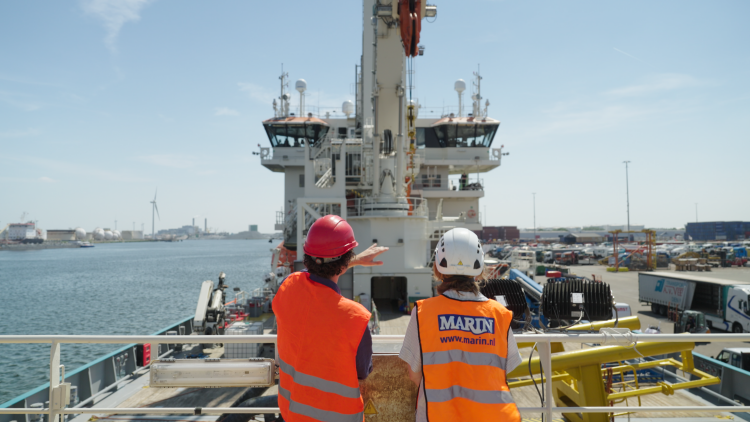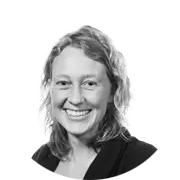



News
Carbon Collectors
Bubble curtains
Floating wind
Wind statistics
Operational advice
Floating Future
Crabbing
Cover
More info
OOAS JIP participants
Especially in a complex wave environment, when the swell(s) are coming from different directions, it can be challenging to find the optimal heading. Contractually, the operating limit of the vessel is often related to one single parameter such as the significant wave height. In reality the workability limits are much more complex. Insight into how all the parameters influence the vessel motion response enables the crew to make a better decision and stretch the operating limits.
The reliability, robustness and accuracy of the numerical ship response model in the core of the tool is of vital importance. The ‘Acta Auriga’ has a unique hull shape and is equipped with a Dynamic Positioning system, an anti-roll tank and a gangway system. This implies nice challenges in creating a numerical model that accurately represents the motion response of the real ship. The monitoring system installed onboard of the ‘Acta Auriga’, including the new wave radar information, provides an extensive source of information and was used for validation of the numerical modelling. As an example, we used the latest unified flow model in XMF to deliver a validated anti-roll tank numerical model. The non-linear transfer functions based on this model are used in the MO4 application.
Crew centred design
Development of high-tech decision support systems has the risk of running into technical problems resulting in delays. A pitfall often seen in these kinds of projects is that the focus remains on the technical development of the system. Cutting corners in creating a user interface without operator involvement saves time but results in a less optimal user interface. For example, not defining the rules of the game involving both onboard crew and office staff saves time but in turn, creates risks in the form of low crew acceptance, poor use or neglect of the system and failure to meet customer expectations.
In this project we have therefore had multiple visits onboard of the ‘Acta Auriga’ to have a good understanding of the daily operations. This was followed by a workshop using MARIN’s simulator with the captain and DP operator of the vessel and the app developer. During the workshop the technical system, the rules of the game and the required support were evaluated in depth during various scenarios. It resulted in the required steps to take for a successful introduction in the daily operation of the vessel.
MARIN would really like to thank Acta Marine, MO4, Next Ocean, Radac and SMST for a very interesting and fruitful cooperation.
Operational complexity
The use case considered by the OOAS JIP is the Walk to Work Construction Support Vessel (CSV) ‘Acta Auriga’ operated by Acta Marine. The ship is equipped with an SMST walk to work system to transfer technicians from the vessel to the offshore wind turbines. For each approach, the crew decides the heading required to approach the turbine. The best heading depends on many factors. Practical things, such as the location of the landing platform and the wind turbine nacelle heading, but also less transparent things like the wind, current and waves and their influence on the vessel response.

October 2023, no. 137
Create a MARIN account to stay updated

Report
Joint development to improve the efficiency of offshore wind installation and maintenance
With offshore wind playing a major role in the Dutch green energy transition, MARIN is participating in a joint industry project to improve the efficiency of offshore wind farm installation and maintenance vessels.
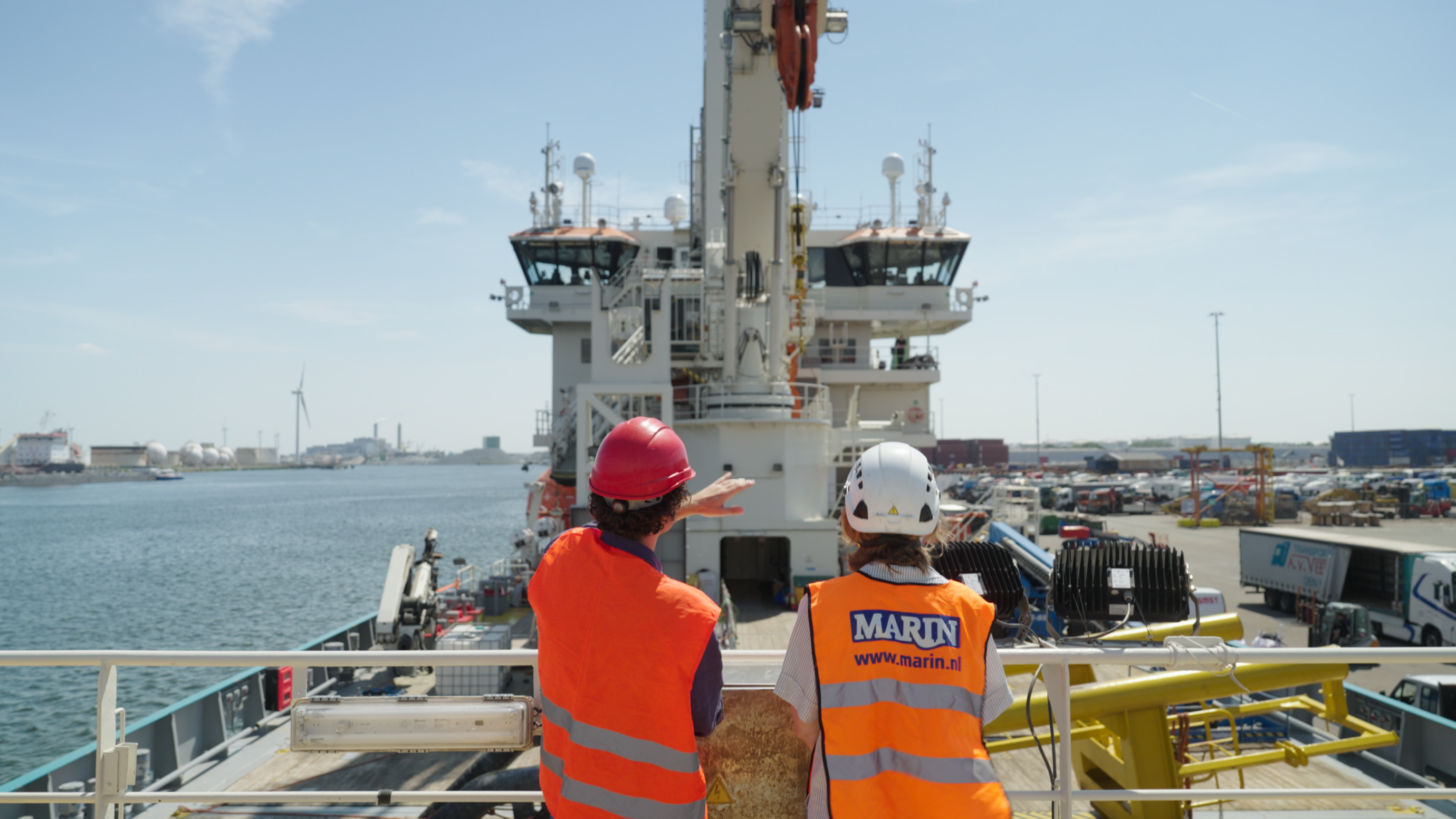
The project is being supported by a grant from the Topsector Energy of the Dutch Ministry of Economic Affairs (RVO). Topsector Energy has the specific objective of supporting the joint development of new products, processes, services and knowledge which contribute to the scaling up of offshore wind energy. The ultimate aim is to achieve about 60 GW (250 TWh) by 2050 and to ensure that this is done so with the lowest possible societal costs.
MARIN initiated the Offshore Operational Advisory System (OOAS) JIP, which is being performed by a consortium including Acta Marine, MO4, Next Ocean, Radac and SMST. For many offshore operators it is a challenge to plan and operate their vessels to their maximum capabilities. The three-year project, which concluded in the summer, aimed to make better use of data for giving upfront advice on the planning and execution of the offshore operation.
Technology under the hood
Using MO4 software, an onboard forecasting app has been developed to give insight into the vessel response. It represents the vessel response based on weather and wave forecasts to support the crew in selecting the best heading and to allow them to optimise their planning.
As part of the scope the vessel was equipped with specialised wave radars working on different principles. NextOcean uses the X-Band wave radar and RADAC used multiple down-looking and outlooking radars. The challenge was to record the two-dimensional spectrum which describes how the waves are distributed as a function of frequency and propagation direction. Knowing this accurate wave information has two main benefits: the actual wave information improves the confidence in the wave forecasts and the distributed wave energy improves the prediction of the vessel response significantly. Furthermore, it provides very important and complete wave information to validate the ship response model.
The crew at the full mission bridge simulator as part of the Crew Centered Design approach.
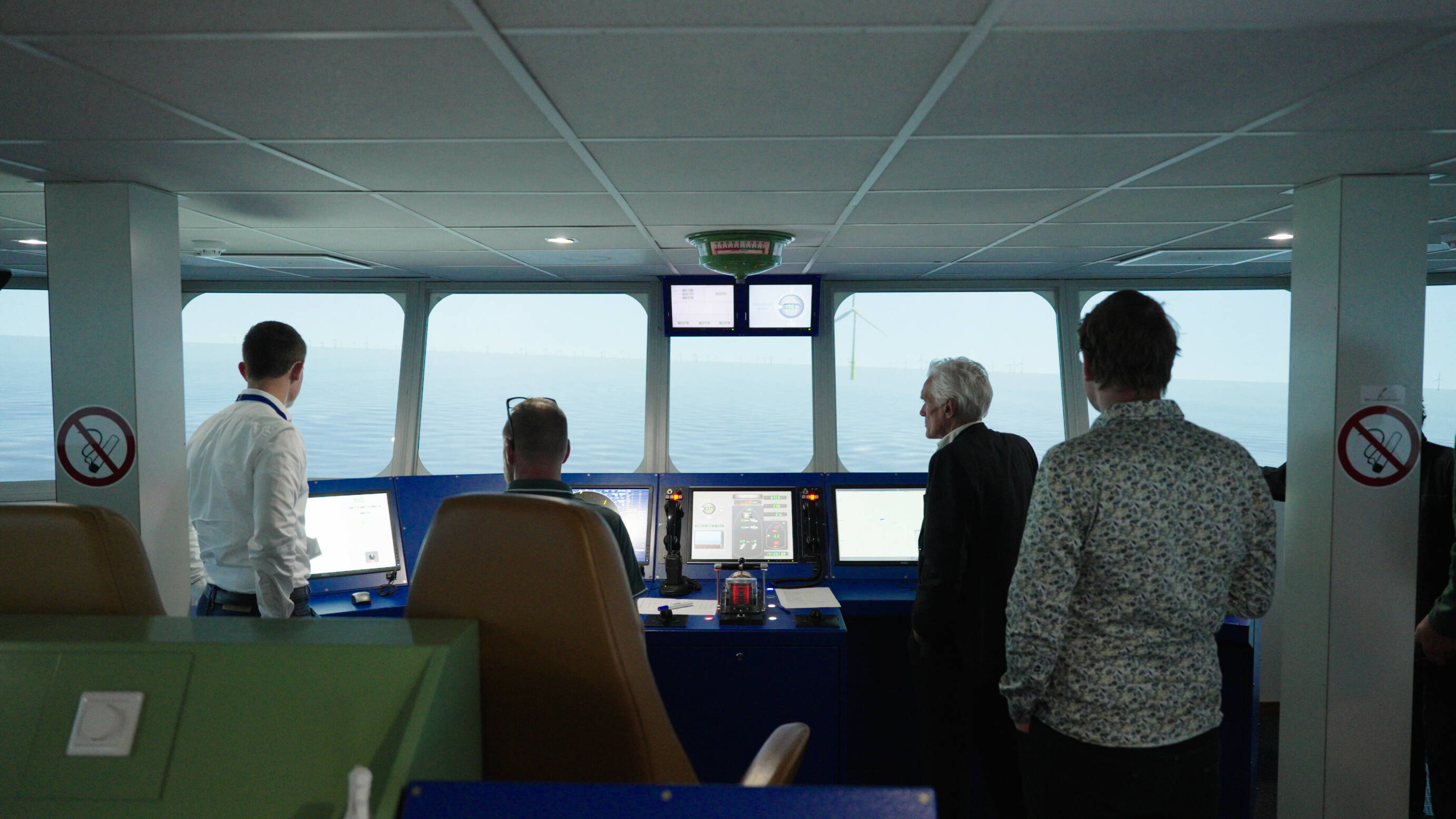
The ‘Acta Auriga’ during one of the onboard visits.
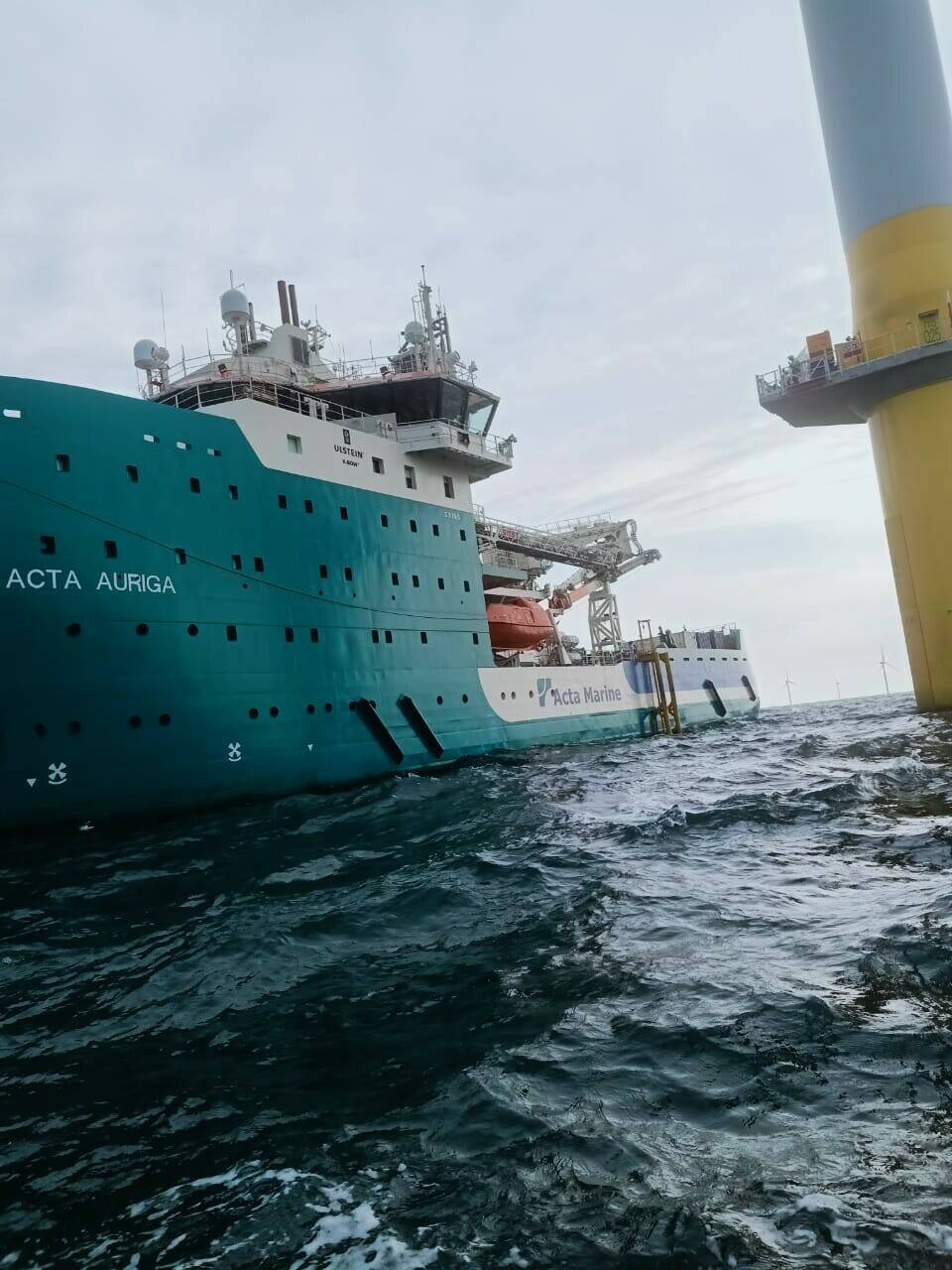
The simulated walk to work Construction Support Vessel (CSV) ‘Acta Auriga’.
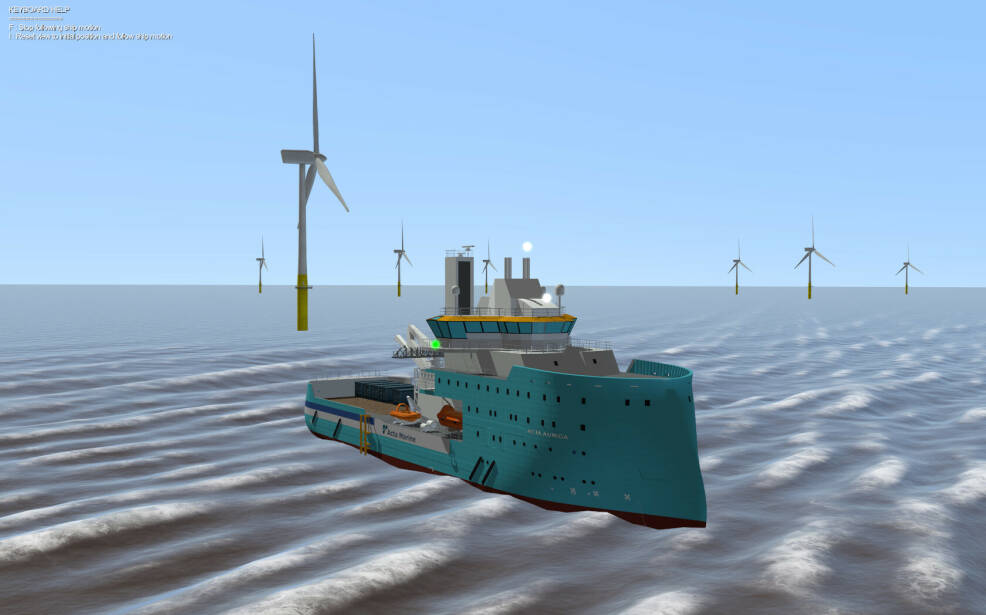
SMST

Radac

NextOcean

MO4

Acta Marine








SMST

More info
Radac

NextOcean

MO4

Acta Marine

OOAS JIP participants

The reliability, robustness and accuracy of the numerical ship response model in the core of the tool is of vital importance. The ‘Acta Auriga’ has a unique hull shape and is equipped with a Dynamic Positioning system, an anti-roll tank and a gangway system. This implies nice challenges in creating a numerical model that accurately represents the motion response of the real ship. The monitoring system installed onboard of the ‘Acta Auriga’, including the new wave radar information, provides an extensive source of information and was used for validation of the numerical modelling. As an example, we used the latest unified flow model in XMF to deliver a validated anti-roll tank numerical model. The non-linear transfer functions based on this model are used in the MO4 application.
Crew centred design
Development of high-tech decision support systems has the risk of running into technical problems resulting in delays. A pitfall often seen in these kinds of projects is that the focus remains on the technical development of the system. Cutting corners in creating a user interface without operator involvement saves time but results in a less optimal user interface. For example, not defining the rules of the game involving both onboard crew and office staff saves time but in turn, creates risks in the form of low crew acceptance, poor use or neglect of the system and failure to meet customer expectations.
In this project we have therefore had multiple visits onboard of the ‘Acta Auriga’ to have a good understanding of the daily operations. This was followed by a workshop using MARIN’s simulator with the captain and DP operator of the vessel and the app developer. During the workshop the technical system, the rules of the game and the required support were evaluated in depth during various scenarios. It resulted in the required steps to take for a successful introduction in the daily operation of the vessel.
MARIN would really like to thank Acta Marine, MO4, Next Ocean, Radac and SMST for a very interesting and fruitful cooperation.
The ‘Acta Auriga’ during one of the onboard visits.
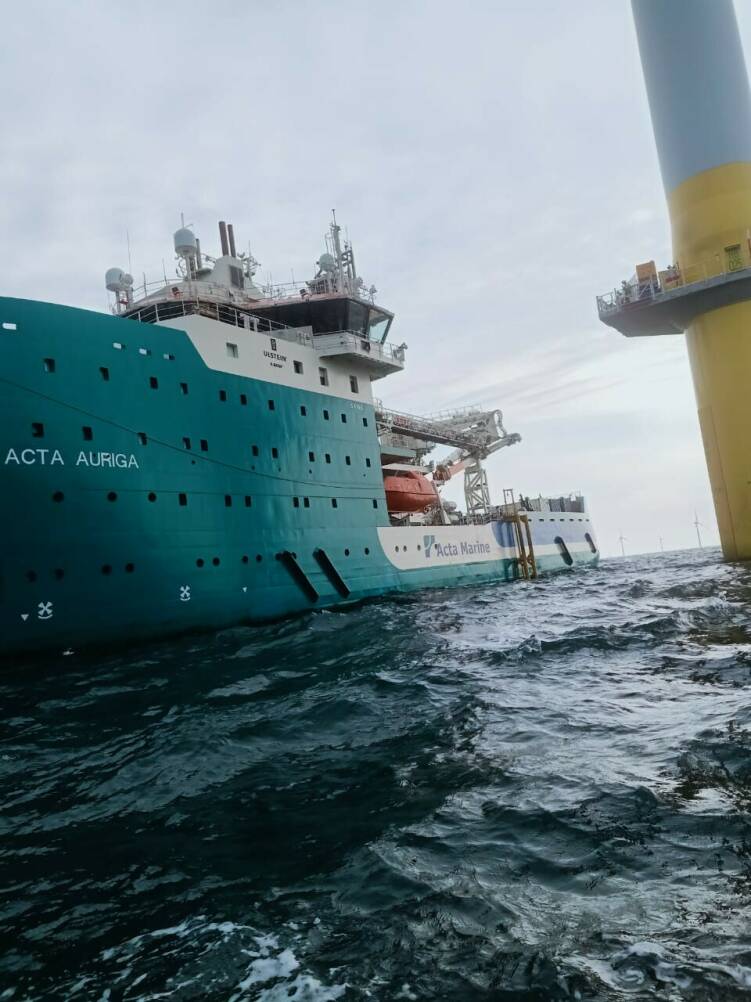
Technology under the hood
Using MO4 software, an onboard forecasting app has been developed to give insight into the vessel response. It represents the vessel response based on weather and wave forecasts to support the crew in selecting the best heading and to allow them to optimise their planning.
As part of the scope the vessel was equipped with specialised wave radars working on different principles. NextOcean uses the X-Band wave radar and RADAC used multiple down-looking and outlooking radars. The challenge was to record the two-dimensional spectrum which describes how the waves are distributed as a function of frequency and propagation direction. Knowing this accurate wave information has two main benefits: the actual wave information improves the confidence in the wave forecasts and the distributed wave energy improves the prediction of the vessel response significantly. Furthermore, it provides very important and complete wave information to validate the ship response model.
Especially in a complex wave environment, when the swell(s) are coming from different directions, it can be challenging to find the optimal heading. Contractually, the operating limit of the vessel is often related to one single parameter such as the significant wave height. In reality the workability limits are much more complex. Insight into how all the parameters influence the vessel motion response enables the crew to make a better decision and stretch the operating limits.
The crew at the full mission bridge simulator as part of the Crew Centered Design approach.
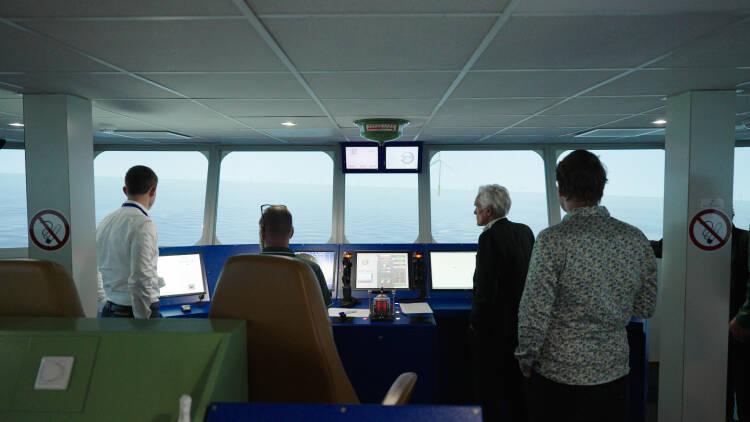
Operational complexity
The use case considered by the OOAS JIP is the Walk to Work Construction Support Vessel (CSV) ‘Acta Auriga’ operated by Acta Marine. The ship is equipped with an SMST walk to work system to transfer technicians from the vessel to the offshore wind turbines. For each approach, the crew decides the heading required to approach the turbine. The best heading depends on many factors. Practical things, such as the location of the landing platform and the wind turbine nacelle heading, but also less transparent things like the wind, current and waves and their influence on the vessel response.
The simulated walk to work Construction Support Vessel (CSV) ‘Acta Auriga’.

The project is being supported by a grant from the Topsector Energy of the Dutch Ministry of Economic Affairs (RVO). Topsector Energy has the specific objective of supporting the joint development of new products, processes, services and knowledge which contribute to the scaling up of offshore wind energy. The ultimate aim is to achieve about 60 GW (250 TWh) by 2050 and to ensure that this is done so with the lowest possible societal costs.
MARIN initiated the Offshore Operational Advisory System (OOAS) JIP, which is being performed by a consortium including Acta Marine, MO4, Next Ocean, Radac and SMST. For many offshore operators it is a challenge to plan and operate their vessels to their maximum capabilities. The three-year project, which concluded in the summer, aimed to make better use of data for giving upfront advice on the planning and execution of the offshore operation.
With offshore wind playing a major role in the Dutch green energy transition, MARIN is participating in a joint industry project to improve the efficiency of offshore wind farm installation and maintenance vessels.
Joint development
to improve the efficiency of offshore wind installation and maintenance
October2023, no. 137
Report
